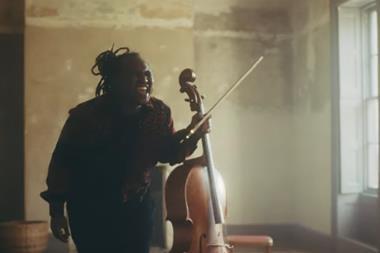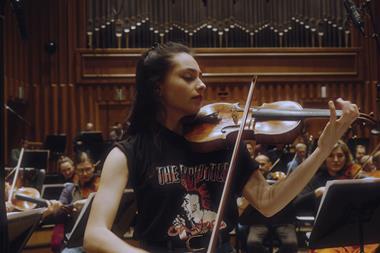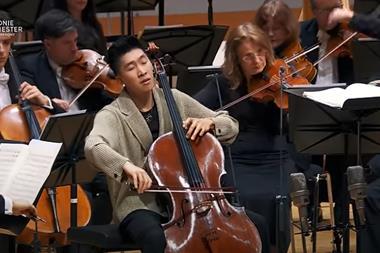‘Acoustically the instrument is flawless, the carrying sweetness of notes played pianissimo being phenomenal. In rapid arpeggio passages the spacing of the notes (the absence of smothering reverberations) is ideal. In power and reserve it yields to the Guarnerius, the tone of which is, expectedly, of greater volume’
This quotation, from an article in the April 1926 edition of The Strad entitled ‘Émile Sauret and his violins’, refers to the Antonio Stradivari violin of c.1685 that now carries Sauret’s name. This is the violin used on the second recorded volume of Sauret’s 24 Études-Caprices, Op.64, released by Naxos and, to me it is the perfect tactile and sonic embodiment of the musical ideals explored in these pieces. Sauret owned two complementary violins for much of his active performing life and told his daughter that he had never seen any other violins for which he would have exchanged his Joseph (Guarneri) or this Stradivari.
The Guarneri ‘del Gesù’ of 1743 which also now carries Sauret’s name will be known to many ‘by ear’ as it was owned and played from the mid 1980s by Itzhak Perlman (latterly alongside the ‘Soil’ Stradivari of 1714). This Guarneri is classified in Haweis’ book Old Violins (1898) alongside Paganini’s ‘Il Cannone’ of the same year. In Perlman’s hands, especially in his 1986 recording of Bach’s Chaconne, it is clear that it has the extraordinary ‘power and reserve’ that The Strad admired.
The Stradivari embodies a different kind of quality and refinement—though not itself lacking power and reserve—and having spent time with it making this recording it is abundantly clear why Sauret could not part with it. He acquired the c.1685 Stradivari violin in 1885, a mere six years before the start of his professorial appointment at the Royal Academy of Music where his 24 Études-Caprices were ‘born’ and completed. When I first picked up this instrument, over 90 years after the observations in The Strad, it was indeed the flawless quality of the instrument (there are no ‘wolf notes’), the clarity, the compactness, the accessibility and above all, the carrying sweetness of the quietest notes that captured my attention. If the 1743 Guarneri is the instrument we might associate with Paganini and the notorious Sauret cadenza for the First Concerto then it seems clear that it is the Stradivari that belongs to these Études- Caprices.
24 Études-Caprices, Op. 64 – Vol. 2 (nos.8–13) featuring Nazrin Rashidova is released on Naxos (8.573843) on 9 March 2018. The ‘Sauret’ Stradivari violin of c.1685 was kindly loaned to her for this recording by John Ludlow
Nazrin Rashidova is currently pursuing a PhD at the Royal Academy of Music where her research explores Émile Sauret and his 24 Études-Caprices.
Read: Variations on fast-forward: the extraordinary density of Émile Sauret’s 24 Études-Caprices









































No comments yet